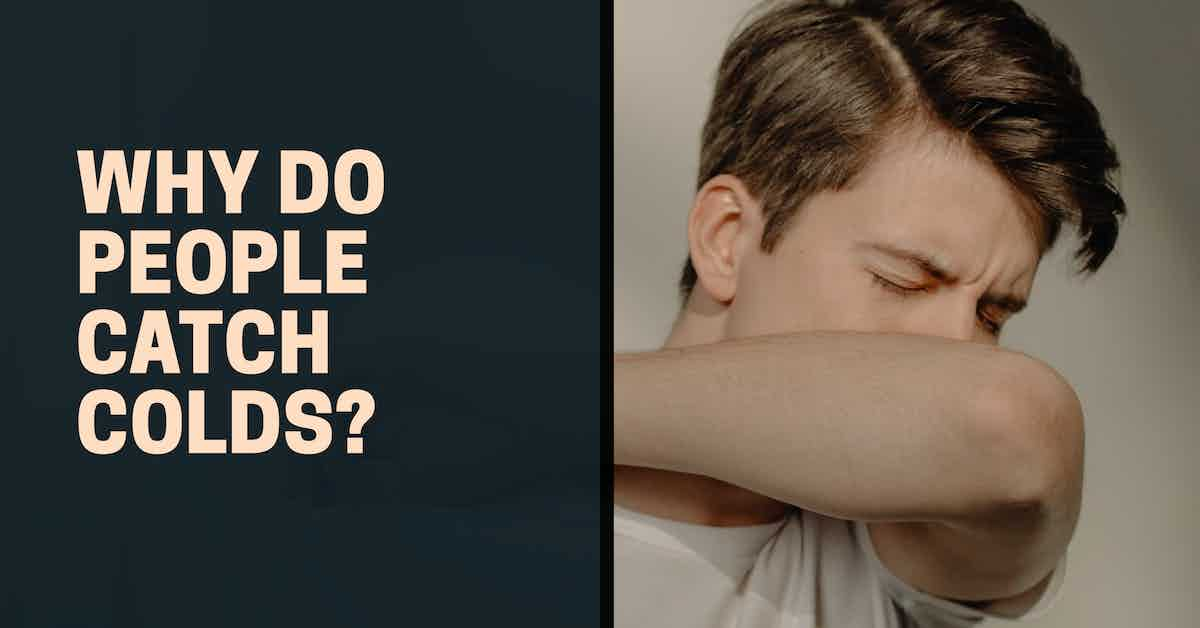Until recently, the correlation between cold weather and an increase in seasonal cold infections was poorly understood--but new information suggests that it all starts with our nose.

The Impact of Cold Weather on the Spread of Illness
One of the most common modes of infectious disease transmission between humans is contact--directly with an infected host or indirectly with a contaminated surface or object.
According to the National Academies;
Some diseases spread via direct contact with infected skin, mucous membranes, or body fluids.
Diseases transmitted this way include cold sores (herpes simplex virus type 1) and sexually transmitted diseases such as AIDS.
Pathogens can also be spread by indirect contact when an infected person touches a surface such as a doorknob, countertop, or faucet handle, leaving behind microbes that are then transferred to another person who touches that surface and then touches his or her eye(s), mouth, or nose.
Droplets spread by sneezes, coughs, or simply talking can transmit infection if one person comes in contact with the mucous membranes of the eye(s), mouth, or nose of another person.
Influenza is spread by airborne droplet transmission but more commonly by indirect contact on surfaces.
While it is possible to catch a cold or the flu during the warmer months, the infection rates rise markedly when temperatures go south for the winter, and we've never really understood why.
The Role of the Nose in Fighting Infections
Previously, it was surmised that infection rates increased in the colder months due to increased indoor occupancy and continuous close quarters compared to warmer months.
However, recently published data from researchers at Northwestern and Harvard Medical Schools alleges that cold weather negatively impacts infection-fighting functions in our noses, resulting in increased transmission and infection rates.
The scientists found that biological "sacs" called extracellular vesicles (EVs) in the nose attached themselves to pathogens, preventing growth.
Some EVs were found to contain antiviral material called microRNA that, when released, can target a virus cell and inactivate it.
How Cold Impacts the Nose's Ability to Fight Infection
When temperatures drop, the air turns cold and dry, often resulting in irritation to the nose's inner lining, triggering nasal glands, which release mucus, and transient receptor proteins, which cause the commonly experienced burning and constricted feeling in the nasal passages.
The increased mucus secretion results in a stuffed-up nose and nasal drip, ultimately translating into an increased number of times a person touches their face--the most common way influenza is transmitted to humans.
At the same time, scientists discovered that cold temperatures disrupted the two mechanisms by which EVs combatted pathogens in the nose--they did not swarm to the site of the infection and appeared to lack the microRNA material.
[...] scientists at Harvard and Northwestern Medical Schools11 that taught us even more about the links between cold weather, infections, and the role of the nose.
Scientists discovered that cold air actually prevents the “sacs” (aka “EVs”) from working their magic to protect us from infection!
When scientists reduced the temperature of cells they were growing in the lab or exposed humans to lower temperatures, they found that EVs didn’t “swarm” as they should to the site of infection, and those that were there didn’t work properly.
A special miRNA called miR-17 was missing from the mix, which is critical for the inactivation of the virus that causes the common cold.
Staying Healthy During Cold and Flu Season
Seasonal cold and flu transmission can be arrested by:
- Increasing facility cleaning and sanitization rates.
- Targeting high-contact fomites with an EPA-registered disinfectant two to three times daily.
- Implementing facility-wide hand hygiene programs to increase handwashing with soap and water, and;
- Improving indoor air quality through a combination of increased HVAC airflow and filtration combined with the installation of commercial-grade air cleaners.
Takeaway
Cold temperatures and dry air increase nasal irritation and dripping, resulting in increased hand-to-face contact.
At the same time, the lower temperatures negatively impact our body's natural defenses against infection.
An increase in hand-to-face contact combined with an almost complete dismantling of pathogen-fighting mechanisms in the nose facilitates increased exposure to pathogens, ultimately culminating in increased infection rates.
Increasing cleaning and sanitization rates combined with high-quality handwashing programs eliminate the presence of illness-causing germs on hands and surfaces, which breaks the chain of infection.
Onboarding and managing the requisite labor and material resources necessary to ensure the highest standards of cleanliness are achieved and maintained may prove cost-prohibitive for many organizations.
Outsourcing is a proven method for onboarding highly in-demand cleaning and sanitization services and experience for a fraction of the price of maintaining a similar service in-house.
If you would like more information regarding the effectiveness of high-performance infection prevention and control measures, or if you would like to schedule a free, no-obligation on-site assessment of your facility's custodial needs, contact us today for a free quote!
In Bakersfield, CA, call (661) 437-3253
In Fresno, CA, call (559) 206-1059
In Valencia, CA, or Santa Clarita, CA, call (661) 437-3253
In Palmdale, CA, or Lancaster, CA, call (661) 371-4756

